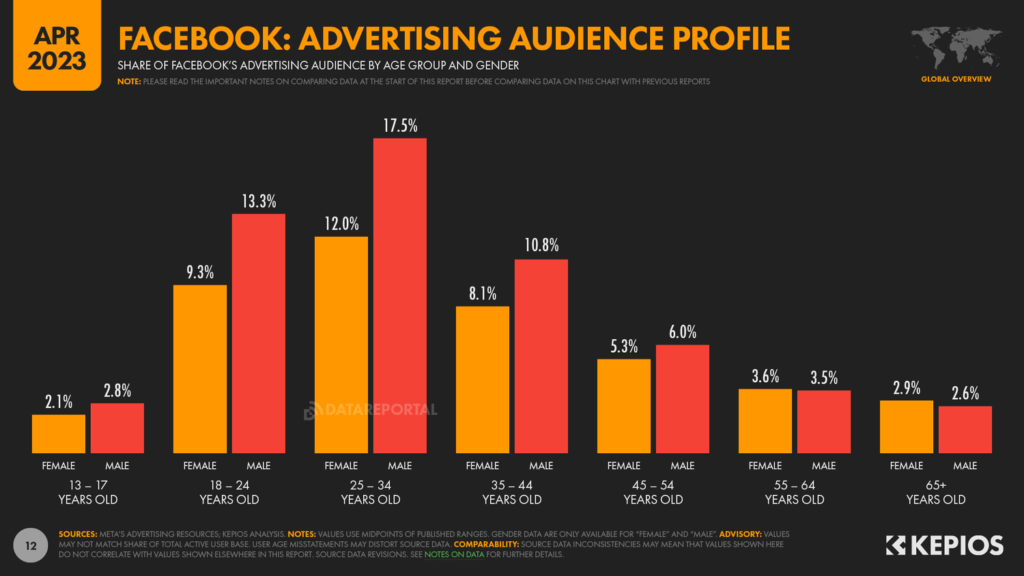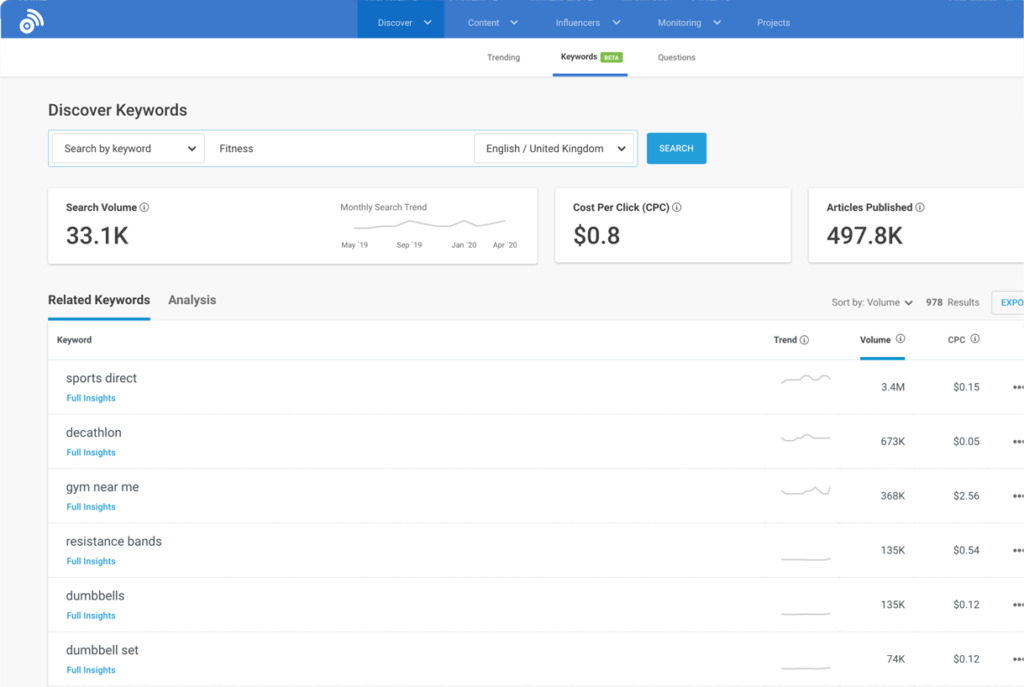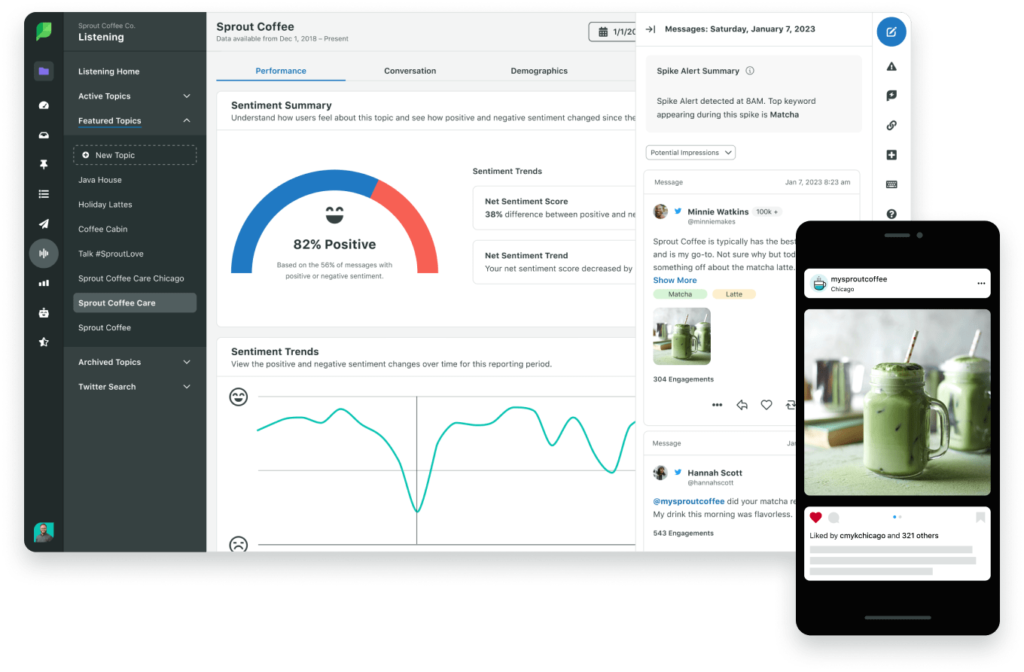In today’s interconnected world, social media has emerged as a dominant force in digital communication. Platforms like Instagram, Facebook, Twitter, and TikTok have become a constant presence in millions, making social networks indispensable for global connectivity.
Marketing and social media have become a marriage resulting in vital strategic outreach for businesses. By leveraging these platforms, companies can effectively engage with customers, regardless of location.
Given its widespread adoption among the masses, businesses must adapt and learn how to use social media for marketing.
Successful social media marketing (SMM) requires more than simply posting a few times daily on Facebook or Instagram. To truly capitalize on the potential of these platforms, you must understand what social media marketing is and how to target your desired audience and enhance brand visibility.
Knowing the basics of social media marketing can bring significant value to your business. Learn everything about marketing using social media, its benefits, and how to get started in the social media marketing guide below.
What is Social Media Marketing?

What is SMM? Social media marketing refers to strategically using social networks to promote a company’s products and services. The typical introduction to social media marketing involves creating engaging content, such as photos, videos, and posts, to foster a solid and enduring connection with customers.
One of the most crucial social media marketing strategies to ensure effectiveness is to tailor content to your target audience rather than adopting a generic approach. It should offer value and appeal, prompting customers to share it with others.
You can enhance brand awareness and drive conversions by delivering the right material and knowing how to market your business on social media.
Understanding the demographics of different platforms is crucial in selecting the appropriate channels to engage with your audience for effective social media marketing.
For instance, as of April 2023, 17.5% of global Facebook users are males aged 25-34, while 12% are female. These correspond to around 668.5 million users, the largest audience using the platform advertisers could reach.

If your business primarily targets this demographic, it makes perfect sense to concentrate your social media marketing techniques on Facebook.
Why is Social Media Marketing Important? Facts and Figures

Over the last decade, social media has been rapidly growing, and some marketers and businesses may find it challenging to keep up with the latest trends and developments.
To get you up to speed on the importance of social media marketing, here’s a roundup of some fast facts and figures you need to know right now.
- Videos are the most effective type of online content. (Wyzowl)

51% of users are likelier to share videos with their friends and families than any other type of content. 89% also said watching videos convinced them to buy a product or service. Try to invest in video content to engage your target audience.
- There are 4.8 billion social media users around the world. (Statista)

This staggering number equates to about 60% of the world’s population. Experts believe users will increase to around 5.85 billion using different social media platforms by 2027.
The continued growth of users opens various opportunities for you to explore how to do social media marketing effectively for your company.
- The most prominent social media platforms have more than a million active users monthly. Four of them are owned by Facebook. (Statista)

The most popular social networks are Facebook, YouTube, WhatsApp, Instagram, WeChat, and TikTok. Facebook boasts around 2.9 million monthly users, while Youtube has approximately 2.5 million.
By knowing which platforms have the most users, you can identify which social networks to utilize and reach a large number of your target audience. Facebook social media marketing seems to have the most reach, as it has the most extensive active customer base.
- 91% of users access social media through a mobile device. (Lyfe Marketing)
Many people bring their phones and tablets while on the road, making these devices the handiest way to access social media. Remember to keep your posts and images mobile-friendly when creating your social media marketing strategy.
- 70% of customers look at Instagram. (Instagram)
Instagram can be the right platform for your company. According to them, 70% of shoppers browse through Instagram when purchasing. You can consider setting up shop on the platform to increase conversions and expand your audience.
Check out What Will a Post-COVID World Look Like for Social Media Marketers? for more of the latest social media insights you shouldn’t miss.
Basics of Social Media Marketing: 5 Core Pillars

The competition for audience attention is fierce in the dynamic realm of branding on social media. To maintain a competitive edge, businesses must develop a robust social media marketing strategy that sets them apart.
Building a solid foundation is essential for driving public engagement. Here are the key pillars to focus on:
1. Social Strategy
What is a social media strategy? The strategy involves the outline of what and which platforms your company posts. In creating a social plan for SMM marketing, you need to ask the following questions:
- What are your goals? Do you want to establish more brand awareness? Do you want to reach more users like your current audience?
- Which platforms will suit your business’s needs best? Choosing a few platforms is best rather than joining all social networks.
- What type of content do you want to share? Find out what kinds of content your audience engages with the most. Is it articles, videos, or photos?
2. Planning and Publishing
A constant social media presence is vital for building a successful online brand. To ensure consistency, try implementing a content calendar or pre-planned posting schedule. By managing your posts in advance, you can efficiently prepare accompanying images/videos and minimize the time spent brainstorming ideas on the day of publication.
If you’re starting from scratch, researching your chosen platform’s optimal posting times and frequency is crucial. This information lets you capture your audience’s attention when they are most active and receptive to your content.

3. Listening and Engagement
As your social media presence grows, users will engage with your brand through comments, messages, and tags. It’s critical to professionally address negative criticism to prevent escalation and show appreciation for the positive feedback.
Monitoring social media conversations about your business is crucial, even when your brand isn’t directly tagged. Social media marketing tools can help you stay updated and engage with users effectively. By actively managing these interactions, you can cultivate stronger relationships with your audience and maintain a positive brand reputation.
4. Analytics and Reporting
Social media marketing analytics and reporting play a crucial role in assessing the performance of your social media posts and pages. They provide valuable insights, such as the reach of your posts, follower growth, and user engagement through likes, shares, and comments.
Reviewing these social media marketing metrics allows you to evaluate the effectiveness of your strategy, identify areas of success, and pinpoint areas for improvement. By leveraging these insights, you can make data-driven decisions to optimize your approach and achieve your goals more efficiently.
5. Advertising
Content planning and publishing through organic channels allow you to reach an audience without direct payment. Still, it’s limited to communicating with existing followers. Try using a paid media strategy or social media services to broaden your reach and attract a more targeted audience.
By leveraging paid advertising, you can utilize specific targeting options based on location, demographics, interests, and lookalike audiences. Integrating paid media with organic efforts enables you to maximize brand visibility, expand your audience, and drive your social media promotions, ultimately helping you achieve your business objectives more effectively.
Additionally, creative analytics can help you optimize your ad spend by identifying the most successful creative elements and tailoring future campaigns for even better results.
Also Read: The Cost of Social Media Advertising
Learn more about how you can navigate the core pillars of social media marketing: Track Trends and Outpace Competitors with Social Media Listening, and How to Find and Hire Social Media Influencers
The Differences Between B2B and B2C Social Media Marketing

B2B (business-to-business) and B2C (business-to-consumer) social media marketing strategies differ significantly. While there may be some similarities, the goals, tactics, and content you can use in these approaches vary extensively.
Here are some of the differences between the two:
B2B Social Media Marketing
- Goals/Metrics: For B2B marketers, the purpose of social media marketing for businesses is to generate leads. Social media content will link to the business’s website, leading to web traffic and potential clients.
- Strategies: The strategy of B2B brands is to position themselves as thought leaders in the industry by posting informational content for their audience. For example, they share tips on improving their audience’s brand.
- Content/Channels: Since B2B marketers want their audience to perceive them as thought leaders, their content is more professional. This includes infographics, white papers/ebooks, webinars, and case studies. The social media platforms that work best for sharing these types of content are Facebook, LinkedIn, and Twitter.
B2C Social Media Marketing
- Goals/Metrics: B2C businesses focus on driving brand awareness, sales, and community engagement. They aim for virality. If their content has gone viral, it means there’s an increase in brand awareness.
- Strategies: In B2C social media marketing, brands try to stand out by creating unique content to capture customers’ attention. Rather than educating their audience, B2C marketers post to sell their brand.
- Content/Channels: Most B2C companies focus their social content on video as it’s engaging and shareable. Whether it’s Instagram stories, a YouTube vlog, or a TikTok explainer, videos work for B2C marketing—92% of video marketers even say that video content gives them positive ROI.

Also Read: Social Media Marketing: Brands' Big Win
5 Social Media Marketing Benefits

Whether your business is well-established or a start-up, you can leverage various social media marketing benefits. Some of the advantages of social media marketing include:
1. Boosts brand awareness and engagement
Strategic use of social media allows you to maintain a continuous presence in the minds of your target audience. By consistently engaging with your audience through posts and content, you increase the likelihood of capturing their attention, encouraging meaningful interactions, and increasing the chances of conversions.
2. It’s cost-effective
Social media marketing is accessible and affordable. Creating an account and posting content on most social networks is free, allowing you to establish an online presence without financial barriers.
If you venture into paid advertising, you can start with a modest budget and closely monitor its performance. Unlike other marketing channels, social media provides opportunities to achieve significant conversion rates without requiring a large budget.
3. Establishes brand authority
Responding to messages and comments, as well as consistently posting original content, enhances the credibility of your brand. You can significantly boost customer satisfaction by demonstrating that you value and prioritize customer interactions through social media.
Satisfied customers are more inclined to share their positive experiences with others, further amplifying your brand’s reach and reputation.
4. Increases website traffic
Each profile you maintain on a social media platform is a gateway to your website. Regularly posting on social media can organically drive your audience to visit your business online.
Increased interaction with your content leads to more inbound traffic to your website. As a result, effectively leveraging social media can boost your online image and attract more visitors to explore your offerings.
5. Improves your SEO rankings
A robust social media presence is integral to achieving a successful SEO ranking. By consistently sharing valuable content, you signal search engines that your brand carries authority and integrity, positively impacting your rankings and visibility.
Incorporating social media into your digital strategy enhances your online presence. It boosts your chances of ranking higher in search results.
Find out more benefits that social media marketing can provide you: Nostalgia Marketing: Statistics, Benefits, and Examples and Meme Marketing: Benefits of Using Memes to Promote Your Brand
Top Social Media Marketing Platforms

In the dynamic landscape of the internet, businesses have a selection of social media marketing platforms. From Facebook’s extensive reach to Instagram’s visual appeal and Twitter’s real-time conversations, each platform offers unique features and benefits.
Here are the top social media platforms you can utilize when creating your social media marketing campaigns:
1. Facebook
As the largest social media platform, Facebook offers businesses a vast user base and robust advertising capabilities. Creating a Facebook Page allows you to connect with customers, share updates, and run targeted ad campaigns.
Features like Messenger further facilitate direct customer communication, making Facebook a comprehensive platform for engaging with audiences and driving business growth.
2. Instagram
Instagram’s focus on visual content makes it a popular choice among younger demographics. You can use Instagram social media marketing to showcase your products and services through captivating images and videos.
Engaging with the audience through comments and direct messages fosters meaningful connections. At the same time, the use of influencers can amplify brand promotion. Instagram Shopping also provides e-commerce opportunities for you to drive sales directly from the application.
3. Twitter
Known for its real-time conversations and topics, Twitter offers unique advantages. You can maintain an active presence and engage with customers and industry influencers by sharing news, updates, and promotions.
Hashtags enhance discoverability, and Twitter Ads enable targeted campaigns to reach specific audiences, making Twitter an effective platform for fostering engagement and driving brand visibility.
4. YouTube
As one of the largest video-sharing platforms, YouTube gives you a massive user base and exceptional visual storytelling capabilities. Brands can create branded channels to publish engaging videos, reaching a global audience.
With the ability to run ads targeting specific demographics and analyze performance through analytics, the site offers an opportunity to showcase your products/services through compelling content.
5. TikTok
The platform’s short-form video format is gaining popularity among younger audiences. You can tap into this platform’s vast reach by creating entertaining and viral TikTok social media marketing content.
Participating in popular challenges and trends, collaborating with influencers, and running advertising campaigns can help you to connect with the TikTok community and build brand awareness.
6. LinkedIn
LinkedIn is a professional networking platform primarily focused on business and career-related content. You can utilize LinkedIn to establish thought leadership, build professional connections, and share industry insights and updates.
The platform’s features, such as job listings, targeted ads for B2B marketing, and LinkedIn Groups for networking, make it a valuable resource for expanding your professional presence and connecting with industry professionals and potential clients.
Learn more about these social media marketing platforms with Reasons to Use Facebook Reels to Market Your Brand, Understanding TikTok’s Influence on Purchasing, and How to Build a Community and Thrive on Instagram
How to Plan Your Social Media Marketing Strategy

Developing a successful social media strategy goes beyond mere knowledge; effective planning is key. To help you get started, here are some essential pointers to consider:
1. Define your goals and align with your objectives
To maximize the effectiveness of your social media marketing, it’s imperative to define your goals clearly. What do you hope to achieve through your social media presence?
Setting specific objectives will guide your strategy, whether it’s increasing brand awareness, establishing yourself as a thought leader in your industry, or creating demand for your products or services. You can develop a focused and impactful approach by aligning your social media activities with your goals.
2. Identify and research your target audience
Avoid making assumptions about your target audience and invest time in thorough research. Utilize tools and resources available to identify and understand your target audience better.
Conducting demographic, psychographic, and behavioral research will provide valuable insights. Tailor your social media strategy by meeting your audience on the most frequently used platforms.
Remember, different social networks attract distinct audiences, so understanding their preferences and habits will help you effectively engage with them and achieve your marketing objectives.
3. Study your competition
Take advantage of the presence of your competitors on social media by conducting a comprehensive analysis of their profiles and strategies. By studying their approach, you can gain valuable insights into their successful tactics and identify areas where they may fall short.
Use the knowledge to refine and differentiate your social media branding and capitalize on opportunities your competitors may have overlooked. By staying informed about your competitors’ activities, you can strategically position your business for success in the dynamic landscape of social media marketing.
4. Establish important metrics
Aligning your goals with relevant metrics is critical for effective social media measurement. Let your objectives guide your choice of metrics.
For instance, tracking content reach becomes essential if your objective is to increase brand awareness. Going beyond mere follower count, your metrics should assess whether you successfully reach your goals.
By establishing the proper standards, you can evaluate the impact of your social media efforts, make data-driven decisions, and adjust your strategy to achieve your goals.
5. Plan the types of content you want to share
To maintain a well-rounded and consistent feed, plan your content schedule and consider the type of posts you want to share. A mix of variety and consistency is foremost.
User-generated content adds authenticity, videos enhance storytelling, and live streams create real-time interaction. Explore different content ideas, such as user-generated content, videos, and live streams, to keep your audience engaged and entertained.
Explore more methods to plan your marketing strategies: Importance of Graphic Design in Digital Marketing Strategy, How to Incorporate Video into Your Digital Strategy, and Establishing Your Buyer Personas Will Make or Break Your Content Marketing Strategy
Social Media Marketing KPIs to Track
Key Performance Indicators (KPIs) play a crucial role in social media marketing as they provide valuable insights into the performance and effectiveness of your campaigns. These metrics help you track their progress, measure success, and make data-driven decisions.
Some of the social media marketing KPIs or metrics you can monitor include:
1. Engagement metrics
Tracking the level of engagement your content receives is essential to gauge audience interest and interaction. Likes, comments, and shares indicate how well your content resonates with your audience and can help identify the most engaging and valuable posts.
2. Reach and impressions
These metrics measure the visibility and exposure of your social media content. Reach represents the total number of unique users who have seen your content, while impressions refer to the total number of times the site displays your content.
Monitoring reach and impressions provides insights into the potential audience size and the effectiveness of your content distribution.
3. Follower growth
Observing the growth of your social media followers indicates your brand’s expanding reach and audience acquisition. It reflects the effectiveness of your content strategy in attracting and retaining followers over time.
4. Click-through rate (CTR)
CTR measures the fraction of users who click on a link within your social media posts. It indicates the level of interest and engagement your content generates and the effectiveness of your call-to-action (CTA) strategies.
5. Conversion rate
Conversion rate appraises the percentage of users who take action, such as purchasing a product, filling out a form, or signing up for a newsletter, as a result of your social media efforts.
Tracking conversions provides insights into the effectiveness of your social media campaigns in turning users into buyers.
Social Media Marketing Analytics: 5 Tools to Get Started

To lift your social media marketing strategy and maximize its impact, you need the right tools to provide a significant boost. Here are some powerful software that can help you to learn how to use social media for marketing:
1. Agorapulse

Agorpulse is a social media management tool offering various analytical features to enhance your social media account management. With AgoraPulse, you can conveniently schedule posts in advance, monitor and respond to social conversations, and customize content tailored to each platform, all within a unified interface.
2. BuzzSumo

BuzzSumo is a content creation tool where you can do keyword research. Enter a topic; then, it’ll give you a breakdown of the trending posts under that subject. With this tool, you can also get a list of influencers connected to your topic, which can be helpful if you want to amp up your campaigns.
3. Sprout Social

Sprout Social is a robust management and monitoring tool designed to streamline your social media presence across various platforms. With Sprout Social, you can efficiently manage multiple social media profiles, utilize post-scheduling functionality, and gain valuable insights through social listening and detailed analytics.
4. Buffer

Buffer is a powerful content curation tool offering automation features to streamline social media posting. With Buffer, you can easily plan and schedule your content calendar according to your desired frequency, whether daily or on specific days.
This tool also includes a follow-up feature that allows you to review previous posts and analyze their effectiveness, helping you make data-driven decisions to optimize your future content.
5. Canva

Canva is an exceptional graphics tool that empowers you to create visually striking visuals and videos for your marketing campaigns. With its user-friendly interface, extensive library of ready-made templates, and trendy graphics, Canva makes it easy to design captivating content even if you don’t have a background in digital marketing or graphic design.
Learn about more tools to help your marketing efforts: E-Commerce Tools: Which Ones Do You Need? and Social Media Tools Businesses Shouldn’t Go Without
Effective Social Media Marketing: Strategies and Best Practices

A comprehensive social media marketing plan is necessary to succeed in your overall strategy. To assist you in creating an effective method, here are some of the social media marketing best practices to keep in mind:
1. Tailor your messaging
It’s valuable to recognize that each social media platform caters to a unique audience with different demographics and preferences. As a result, it’s vital to tailor your messaging to align with each site.
This approach ensures that your message is well-suited to the characteristics and expectations of each platform’s audience, ultimately maximizing the effectiveness of your social media marketing efforts.
2. Create a strategy for each platform
Rather than trying to maintain a presence on every social network, it’s more efficient to strategically choose a few platforms that align with your target audience and brand objectives. When selecting a social network, consider who your brand will reach and which types of posts are likely to resonate with your audience.
3. Stay up-to-date
Social media provides a valuable platform for identifying and capitalizing on social media marketing trends that align with your brand and messaging. Don’t be afraid to leverage these trends to drive up your engagement.
Remember to stay vigilant and watch for emerging strategies and patterns among your competitors or other users.
4. Produce high-quality, varied content
While the primary goal of your social media presence is to promote your products or services, it’s significant to strike a balance and avoid excessive promotional content that may disengage your audience.
To maintain follower engagement, consider diversifying your posts by sharing infographics, inspirational photos that align with your brand values, and even lighthearted memes when appropriate. This variety of content can help keep your followers entertained, informed, and interested in your brand beyond direct promotions.
5. Find your brand voice and tone
Establishing a presence on social media provides an opportunity to humanize your brand and showcase its unique personality. Consider how you want your audience to perceive your business—is it playful, professional, authoritative, or relatable?
Align your content with your desired brand voice and tone, including your bio, photo captions, and live streams. By infusing your posts with a consistent personality, you can forge deeper connections with your audience and shape their perception of your brand.
Learn how to create a winning social media marketing strategy: 8 Social Media Marketing Tips to Grow Your Business, 5 Brands Show Us How To Win Big with Social Media Marketing, and How Hiding ‘Likes’ on Instagram Influenced Social Media Marketing
The Latest Social Media Marketing Trends
Understanding the newest trends in social media marketing can provide valuable insights and help you adapt your strategies to remain competitive. Some of the current trends shaping the social media landscape are:
1. Video content dominance
Video has become the preferred format for content consumption on social media. The trend emerged due to its ability to captivate audiences, convey information effectively, and increase engagement.
Brands leverage video content for storytelling, tutorials, product demos, and behind-the-scenes glimpses. Notable examples include the rise of short-form video content on platforms like TikTok and the increased adoption of video ads on Facebook and Instagram.
2. The need for automation
Automation has become crucial for efficient management as social media platforms continue to develop. Automation tools and platforms help you streamline your social media actions, such as scheduling posts, monitoring mentions, and analyzing performance.
Examples include social media management tools like Buffer and Hootsuite, which offer content scheduling and reporting automation features.
3. Rise of influencer marketing
Influencer marketing has become a powerful trend in social media marketing. You can collaborate with influencers who have a faithful following to support your products or services.
Influencers can create authentic and relatable content, driving engagement and brand awareness. These include partnerships between fashion brands and popular Instagram influencers, where the latter showcase products in their posts and stories.
4. Social commerce integration
The integration of eCommerce within social media platforms has gained momentum. Social commerce allows users to discover, browse, and purchase products directly within their social media feeds.
Some examples are Instagram’s Shopping feature, where businesses can tag products in posts and stories, and Facebook’s Marketplace for buying and selling goods within the platform.
5. Adoption of user-generated content (UGC)
UGC has become an essential part of social media marketing strategies. Brands encourage their audience to create and share content related to their products or services.
These types of content enhance authenticity, build trust, and increase engagement. You can have your customers use branded hashtags on platforms like Instagram, where they can share their experiences using the brand’s products or participating in campaigns. Another example is challenge videos on Tiktok.
Harness the Power of Social
Social media has become integral to people’s everyday lives in today’s digital age. Recognizing its widespread influence, businesses employ social media as a powerful channel to connect with customers and promote their brands.
However, simply having a presence on social media is not enough. Companies must develop and implement an effective social media marketing strategy to harness its benefits.
Successfully navigating the realm of social media marketing can be a challenging undertaking, but the rewards are significant. By incorporating a well-crafted plan, businesses can increase sales, generate leads, attract new customers, and enhance brand awareness.
For expert guidance and support in enhancing your social media strategy, consider partnering with Spiralytics, a trusted digital marketing agency. Our specialized knowledge and experience can help you optimize your social media presence, engage your target audience, and achieve your marketing goals.

Your Social Media Marketing FAQs Answered
Social media can be highly effective in promoting small businesses. It provides an affordable and accessible platform to reach a broad audience, build brand awareness, and engage with customers.
Social media is used professionally in various ways. It allows professionals to build a brand, establish thought leadership, and network with industry peers.
Experts can share valuable insights and expertise, participate in industry discussions, and connect with potential clients or employers. Social media also provides a platform for professional development through online courses, webinars, and industry-specific communities.
You can measure the success of their social media campaigns by tracking key performance indicators (KPIs) such as engagement metrics (likes, comments, shares), reach and impressions, follower growth, website traffic, and conversion rates.
By using analytics tools provided by social media platforms or third-party applications, businesses can gain valuable insights into their campaign performance, identify areas for improvement, and optimize their strategies to achieve their goals.
The frequency of posting on social media depends on several factors, including the platform, target audience, and content strategy. Experts recommend posting around once or twice a day on sites like Facebook and around thrice a week on Instagram.
However, quality should always take precedence over quantity. It’s better to create and share valuable, relevant content less frequently than to inundate your audience with low-quality or repetitive posts.
Monitoring engagement and analyzing audience response can help decide the optimal posting frequency for your business.
Businesses can utilize various tools and strategies to target their audience on social media effectively.
Defining buyer personas or ideal customer profiles can help you understand your target audience’s demographics, interests, and behaviors. You can then use this information to create targeted ads and content that resonate with the intended audience.
Social media platforms also provide advanced targeting options such as location, age, interests, and custom audiences based on website visitors or existing customer lists. Regular campaign performance monitoring and analysis can help fine-tune targeting efforts and optimize results.






